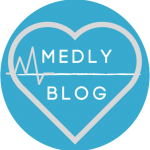The International Society for Auricular Reconstruction (ISAR) held its 3rd Congress virtually from the 25th to the 26th of March 2022. As I was also presenting at this conference, this was an event that I was very much looking forward to – especially since I had the opportunity to present in front of and network with world renowned ear reconstruction surgeons (name-drops pending). The two-day Congress was held on the inConference virtual platform and boasted a fantastic line up of keynote speakers and presentations split into six sessions covering nearly all aspects of ear reconstruction. For the purposes of the blog, I will be reflecting on topics that I found particularly interesting: ear reconstruction with cartilage/porous polyethylene (PPE) and research & 3D printing in auricular reconstruction.
The conference opened with an endearing memorandum to Dr Satoru Nagata, a true pioneer in autologous ear reconstruction, who sadly passed away this year. After several minutes of silence, the conference began with the topic of ear reconstruction with cartilage, which was chaired by Dr Stéphane Guichard and Prof Mehmet Mutaf. The first presentation was given by Dr Fernanda Valotta, one of the keynote speakers, on the topic of state-of-the-art costal cartilage ear reconstruction. For those less attuned to this technique, this is an ear reconstruction technique that uses the patient’s own rib cartilage to form a 3D ear. The reasons why this material is chosen is because costal cartilage is available in large quantities that allows a 3D customised ear for each patient; but the most important aspect is that it can be placed directly under local skin which is the best cover we have with respect to aesthetics and sensitivity.
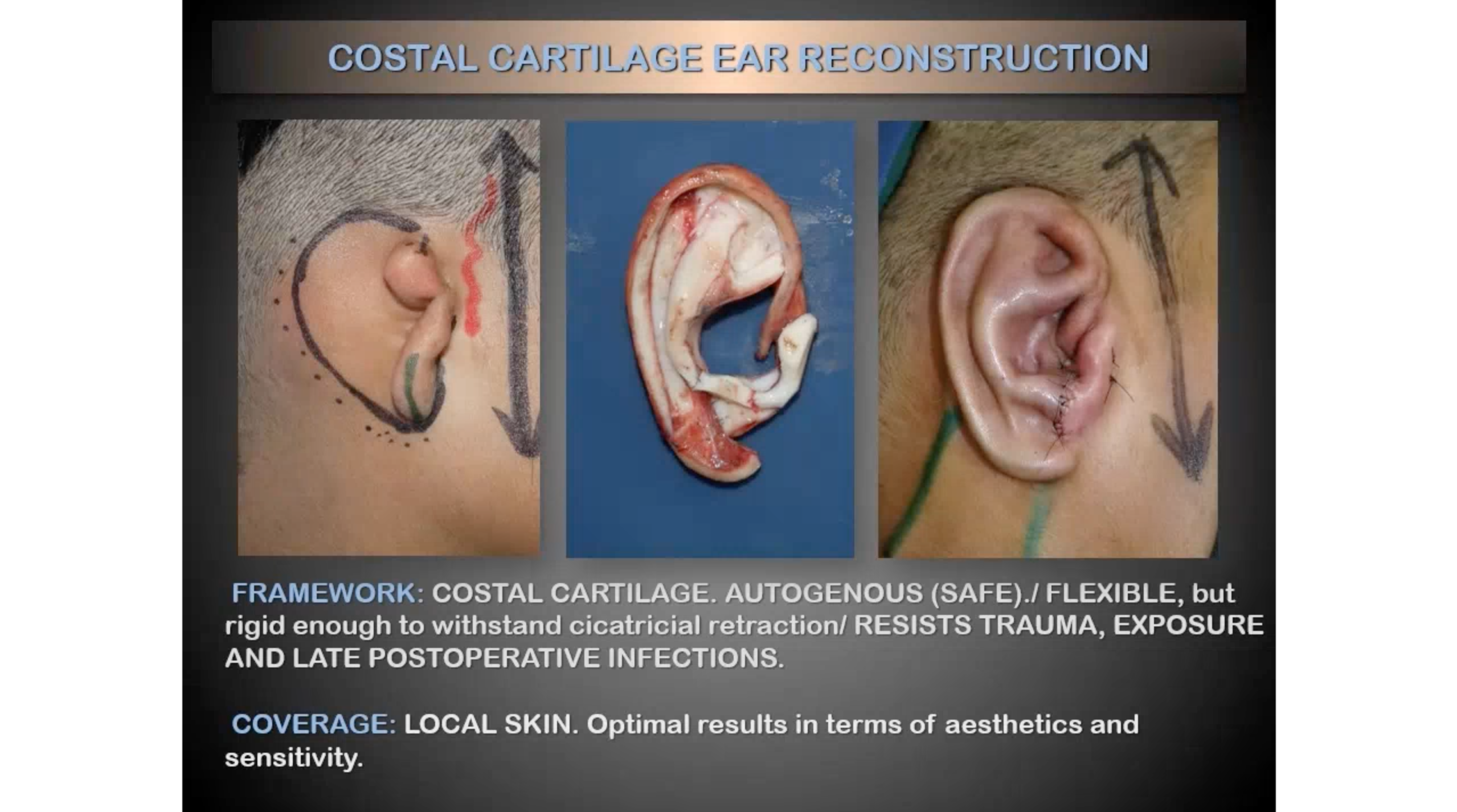
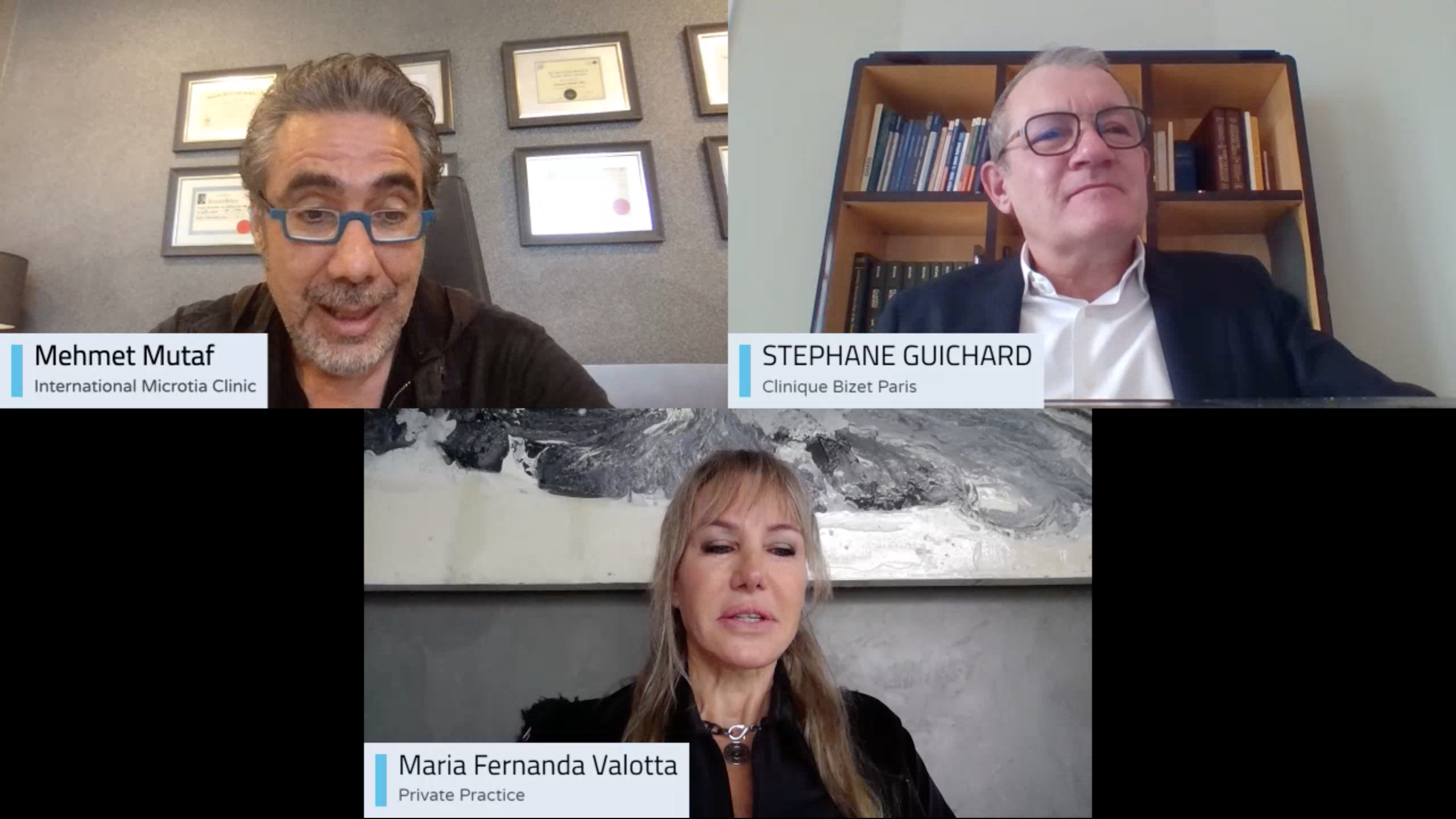
Dr Valotta undergoes a two-stage operation with the first stage involving resection of microtic cartilage, preparation of pocket, harvesting of costal cartilage, carving of ear framework and inset of framework under the skin. The second stage is performed six months later where symmetry of contralateral ear and sulcus construction with neck advancement and skin grafts is prioritised. Ear reconstruction is by far one of the most technically challenging surgeries as it requires tremendous effort and precision from carving an ear to managing potential complications. It is where science meets art and as every artist knows, a true masterpiece is borne from exceptional technique and the tools in which to execute the vision. This was reiterated by Dr Valotta who stressed that “the beauty of reconstruction, we need to remember always, will rely on the quality of the framework”. She then progressed onto explaining her technique based on previous works of Dr Françoise Firmin, another pioneer in autologous ear reconstruction. The more she explained her technique, the more I appreciated the complexity of ear reconstruction as the surgeon must consider the shape of ear, location of ear, availability of skin cover, projection of the ear to create a 3D ear that looks similar, if not exactly like the contralateral ear. The presentation ended with a series of case presentations where Dr Valotta showed results of patients. I was, as well as the panel discussion team after her talk, stunned by her results. The rest of the session involved research from various surgeons and trainees from across the globe followed by panel discussions with the presenters, audience and chairs. It was incredibly exciting to observe the vast amounts of research and projects taking place on this topic as the discussions were highly interactive and lively, owing to the passion each presenter possessed concerning their work.
The beauty of reconstruction, we need to remember always, will rely on the quality of the framework
Dr Maria Fernanda Valotta
The second session, and admittedly the one I looked most forward to, was about research & 3D printing. This session was chaired by Mr Neil Bulstrode and Dr Indri Lakhsmi Putri and consisted of presentations from around the world on research particularly in the area of tissue engineering. Tissue engineering is a concept of combining scaffolds, cells and biologically active molecules to build functioning tissues. Scientists and surgeons have recently found a way to form cartilage with patient specific shape and mechanical property in vitro and to generate mature cartilage in vivo with very stable long-term results! Although the individual processes of tissue engineering were far beyond what I could comprehend, the presenters explained the general process in a simple manner with the use of videos and diagrams. With the recent advancements in technology, it was also incredible to see how this has been adapted and used in the field of ear reconstruction also. For example, tissue bioprinting and 3D printed custom design ear models for reference were currently being used and have shown a lot of potential in aiding the acceleration of the time of surgery and reducing complications. This is a huge step towards optimising results for patients whilst ensuring safety. What impressed me the most was the sheer volume of different methods the presenters utilised to recreate/help in the reconstruction of an ear, which served as a pertinent reminder to be continually updated and aware of current medical/surgical knowledge.
The fourth session of the conference proceeded on the 26th of March, on the topic of ear reconstruction with PPE, where I also presented my work on “Systematic Review of Medpor versus Autologous Ear Reconstruction”. This session was chaired by Dr John Reinisch and Prof Corstiaan Breugem, who are pioneers in the field of paediatric plastic surgery. It was a truly humbling experience and a great honour to virtually meet such giants that I had only read about in textbooks and publications. The session kicked off with a brilliant lecture on Cartilage versus PPE by Dr Zung Chung Chen. This was a masterclass presentation going through in detail results of cases from both frameworks and its complications experienced in his centre in Taiwan. The transparency of the results and the evidence of the vast experience Dr Chen accumulated with both frameworks was astounding. To put into perspective, most surgeons spend their entire career dedicated to practising with one framework; to be incredibly experienced in both, as you can see, is a massive achievement beyond measure. Unfortunately, due to technical difficulties, we were not able to see Dr Chen live but we were joined by the presenters that followed Dr Chen who gave intriguing points and opinions on working with PPE (an alloplastic implant otherwise known as Medpor). The second group of presentations began with the recording of my presentation. I was led to a “green room” where all the presenters of this group along with the chairs were present. This was where the presenters were informed by the organising staff of the logistics behind presenting online and was a platform where the presenters could communicate with each other. It was very nerve wrecking (even though the presentation was pre-recorded) to be presenting first and in awaiting the response from the chairs and audience during the panel discussion. I would like to think that my presentation was well received as I received lots of questions from the audience regarding my project!
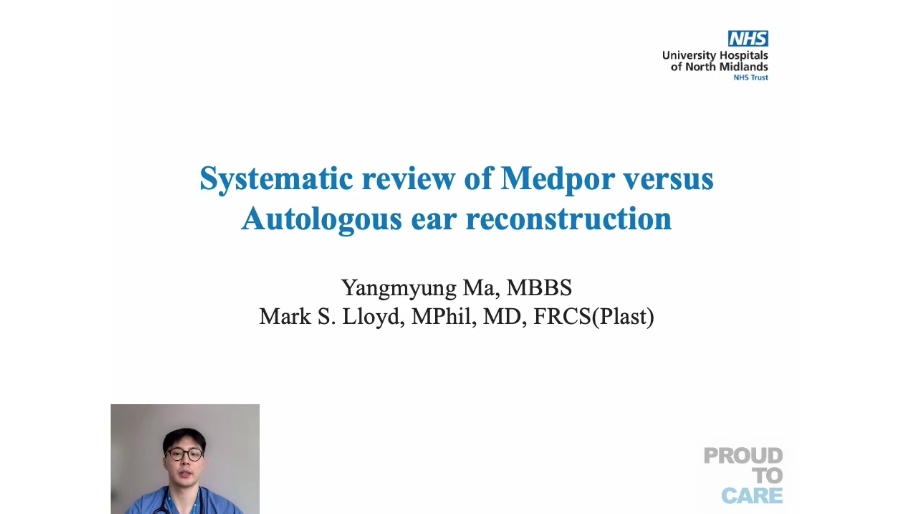
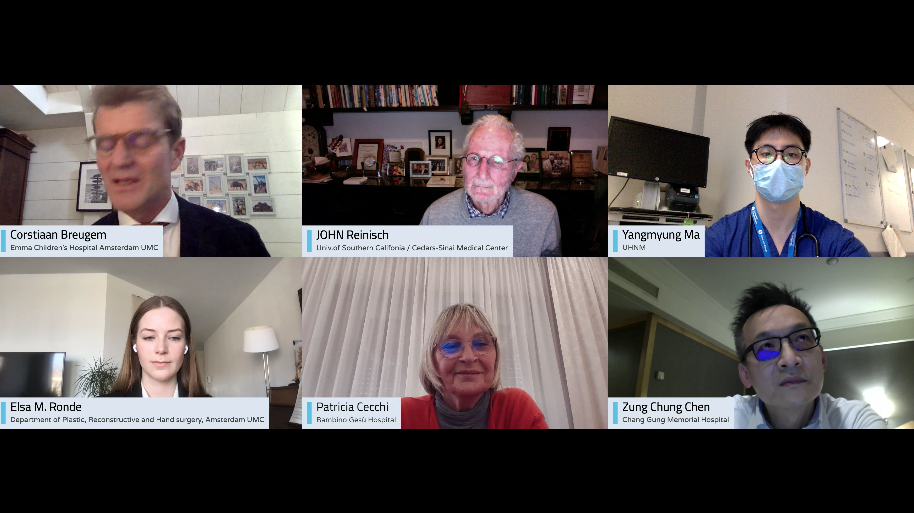
Overall, the two-day conference was a jam-packed and action-packed event full of insights and opinions of renowned surgeons and pioneers from around the world. It was an incredibly humbling experience to have my name mentioned next to some of the important names in ear reconstruction as well as being able to network and answer questions from the audience. As Isaac Newton once said, “If I have seen further, it is by standing on the shoulders of Giants”, this conference has certainly had the same effect as it widened my eyes to the wonders of the work currently undertaken in this field. I hope that through conducting further research and attending/presenting in more of these conferences that I may make a more significant impact on the care of patients presenting with auricular problems.
~~~~~~~~~~~~~~~~~~~
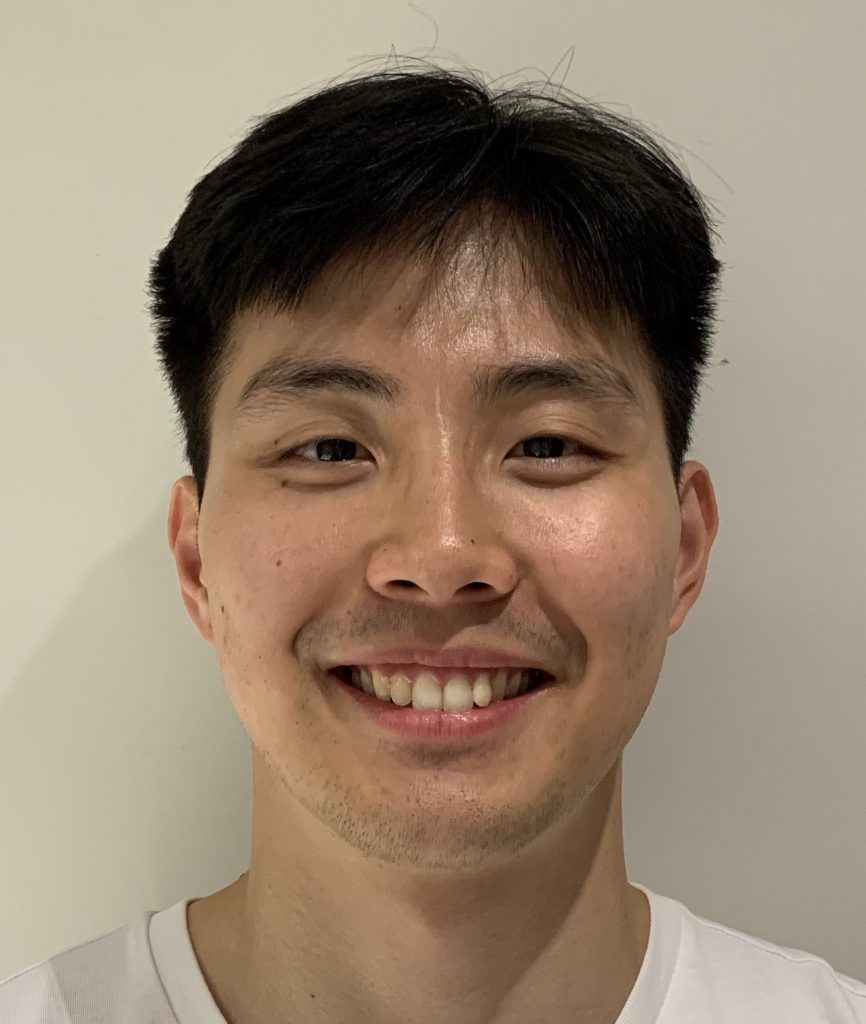
Dr Yangmyung Ma is a FY1 doctor and the Founder of HYMS Plastic, Reconstructive and Aesthetic Surgery Society. He is the current HYMS representative for British Foundation for International Reconstructive Surgery and Training (BFIRST) charity, the Charity Outreach Officer for Korean Association UK Medical Association (KUMA) and aspires to be a Plastic surgeon. In his spare time, he enjoys playing music or sports.
